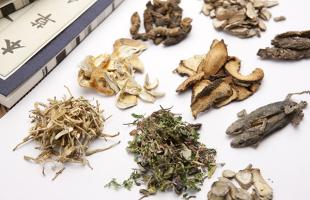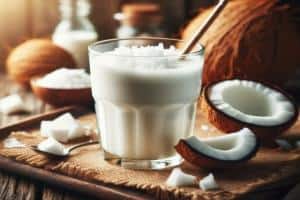Dry granulator is a new granulation process developed after the traditional wet mixing granulation. It uses the crystal water of the material itself to directly compress the raw material powder through mechanical extrusion → molding → crushing → granulation. a granulation process. Its characteristics: the raw material powder is continuously and directly formed and granulated, omitting the humidification and drying processes, and saving a lot of electric energy; the environmentally friendly granulation process does not need to add binders, which is energy-saving and pollution-free. Dry granulator is an energy-saving and environmentally friendly equipment with less investment, high efficiency, saving manpower, material and financial resources. This paper describes the energy saving and consumption reduction of dry granulation by comparing dry granulator and wet granulator.
I. Dry granulator overview
The pharmaceutical industry involves the processing of various active pharmaceutical raw materials and one or more excipients. Most of these raw materials are fine powders, and these powders have different particle sizes, uneven densities, and poor fluidity. , Easy to layer. Therefore, it is necessary to go through a key granulation process before the subsequent tableting, capsule filling or direct packaging of APIs in the form of granules. At present, there are four main granulation processes:
1.1 Traditional wet granulator
That is, the trough mixer is first mixed into a wet “soft material”, and then granulated by a swing granulator. At present, this method is still used by some manufacturers, but such equipment has problems such as uneven mixing, unclean cleaning, poor sealing and oil leakage.
1.2 New wet mixing granulation
That is, high-efficiency wet mixing granulation, which uses a mixing slurry to stir and mix powder materials and binders into wet soft materials, which are cut by high-speed crushing knives to make wet soft “particles”. At present, this method is widely used. It is widely used. The equipment and process are not perfect: a large amount of adhesive is required, and the sewage produced by cleaning will cause pollution to the environment. In addition, the distribution of the wet particles produced is wide and uneven, and the number of fine powder is large. Mostly used for tableting or capsule filling.
1.3 One-step boiling granulation
This process is a comprehensive application of spray technology and fluidization technology, so that the traditional mixing, granulating and drying processes can be completed in the same closed container at one time. Similarly, its equipment and process require a lot of binders, sewage treatment is required after cleaning, and the granulation time is relatively long.
1.4 Dry granulator
This process uses the crystal water of the material itself and relies on the principle of mechanical extrusion to directly compress the raw material powder → form → coarsely crush → granulate, and can carry out continuous granulation. It is an energy-saving and consumption-reducing process with simple and convenient operation.
II. Comparison of dry granulator and wet granulator
Dry granulation and wet granulation have their own merits and applications. However, compared with the above three kinds of wet granulation, dry granulation has the following advantages:
Dry granulation and wet granulation have their own merits and applications. However, compared with the above three kinds of wet granulation, dry granulation has the following advantages:
(1) Compared with wet granulation, dry granulation requires less equipment, lower maintenance cost, and less floor space, so its production cost is low.
(2) Dry granulation is simpler than wet granulation, with fewer intermediate links, which can control dust flying and reduce powder waste. At the same time, there is no exhaust emission and environmental pollution is reduced.
(3) Compared with wet granulation, the biggest advantage of dry granulation is low energy consumption, because dry granulation does not require humidification and then drying.
(4) Dry granulation does not need to add any binder; some drugs (antibiotics, strong heat sensitivity) and Chinese herbal extracts do not meet the specific gravity requirements, and no binder can be added, so they must be done through the dry granulation process.
(5) The particle size of the finished product after dry granulation is uniform, the bulk density is increased, the fluidity is improved, and the disintegration degree can be controlled, and at the same time, it is convenient for subsequent processing, storage and transportation.
III. Energy saving and consumption reduction of dry granulator
Energy conservation is to strengthen the management of energy use, take technically feasible, economically reasonable and environmentally and socially acceptable measures to minimize losses and waste in all links from energy production to consumption, and use energy more effectively and reasonably; Consumption is to reduce input and reduce consumption in production. This paper takes the production of 200 kg/h material for granulation as an example, and compares the energy saving and consumption reduction of dry granulation and wet granulation.
3.1 Less investment in equipment
Wet granulation input equipment: (1) 1 set of SL150 wet granulator, the production capacity is 50 kg/batch, the granulation time is about 10 min/batch, and the auxiliary time is generally 4 batches/h, that is, 200 kg/h; (2) 1 FG120 boiling dryer, the production capacity (wet material) is 120 kg/batch, the drying time is 15-45 min (about 2 batches/h), and the dry powder is 200 kg/h); (3) TA120 1 set of compressed air machine, 1 set of YK200 rocking pellet machine. The total equipment needs to invest 85000usD to 100000USD.
Dry granulation input equipment: (1) 1 GL200 dry granulator with a production capacity of 200 kg/h; (2) 1 ZL refrigerator. 2 sets of equipment can be connected as a whole, which requires an investment of 75000 to 80000USD.
3.2 Small demand for space and workshop
It can be seen from Table 1: the space occupied by the wet granulator is 2 220 mm × 1 010 mm × 1 460 mm; the space for the main engine of the boiling dryer is 1 700 mm × 2 200 mm × 3 130 mm and the space for auxiliary machines, fans and pipes ; The space occupied by the compressed air machine is 1 640 mm × 670 mm × 1 420 mm; the space occupied by the rocking pellet machine is 1 160 mm × 470 mm × 1 230 mm. Taking the above equipment into consideration, the whole set of wet granulation equipment requires three workshops, 4 m × 4 m × 4 m, 4 m × 2.5 m × 4 m, 4 m × 2.5 m × 3 m, with a total area of about 36 m2
The space occupied by the method granulation is 2 600 mm×1 300 mm×2 700 mm (including the space of the refrigerator). Considering the auxiliary space during production and the space required for safe production, the workshop required for dry granulation is 3.6 m× 2.5 m×3.2 m, with a total area of about 9 m2; which only accounts for 1/4 of the wet method.
3.3 Fewer operators
Dry granulation requires only 2 operators, while wet granulation requires 4 to 6 operators. The corresponding wage expenses for dry method are 1/3 of that of wet method.
3.4 Low cost of equipment repair and maintenance
Wet granulation process: feeding → adding binder and mixing granulation (including the process of supplying compressed air) → granulating → boiling drying (including supplying steam and compressed air) → multiple processes such as granulation.
Dry granulation process: After feeding, it is directly compressed and granulated, and the whole granulation has only one process.
Since each processing equipment needs corresponding repair and maintenance, the maintenance cost of the dry method is low.
3.5 Less energy consumption
3.5.1 Comparison of electricity consumption in the granulation process
Power consumption Q=18.845 kW×1 h=18.845 kW·h for dry granulation of 200 kg of raw materials;
The electricity consumption Q=46.7×1 h=46.7 kW·h for wet granulation of 200 kg of raw materials.
Therefore, the electricity consumption of dry granulation is only 40.4% of that of wet granulation.
3.5.2 Comparison of steam consumption in granulation process
The dry granulation process does not require steam, the steam consumption of wet granulation is 211 Kg/h, and the relationship between the amount of steam and the degree of electricity consumption is Q=2.6/3 600×1 000×211=152 kW·h. Note: The heat energy generated per kilowatt-hour of electricity is about 3 600 kJ, and the heat energy required for each g of 20 ℃ water to evaporate into 100 ℃ steam is: 80×4.31J/(kW·h·g)+2 260 heat of vaporization=2 600 J= 2.6 kJ.
3.5.3 Comparison conclusion
A comprehensive analysis of the two comparisons shows that the power consumption of dry granulation only accounts for 9.5% of that of wet granulation, which greatly saves energy consumption. Similarly, the cost of expenditure is also greatly reduced.
3.6 No need to consume adhesive
The dry granulation process relies on the crystal water of the material itself, and uses the principle of mechanical extrusion and crushing to directly granulate without adding a binder. The principle of wet granulation is to add a liquid binder to the drug powder, and the powder is agglomerated by the bridging or bonding of the binder to prepare granules. Adhesives generally use water, dextrin, starch slurry, alcohol, etc. Different materials and different uses of adhesives have different consumptions, generally accounting for 5% to 30% of the material.
3.7 Environmental protection
In the process of dry granulation, the cooling of the roller is forced to circulate by a refrigerator, which not only has a good cooling effect but also does not consume water resources. Therefore, no waste gas and waste water are generated during the granulation process. The cleaning process is simple and easy to clean. The granulation components except the pressure wheel can be disassembled and cleaned, and the production equipment is small, so the generated sewage is also small.
To sum up, dry granulation is much lower than wet granulation in terms of cost and energy consumption from equipment input to product output. With the continuous improvement of the dry process and the gradual shortage of energy, the dry granulation process will gradually replace the investment in the wet granulation line.






